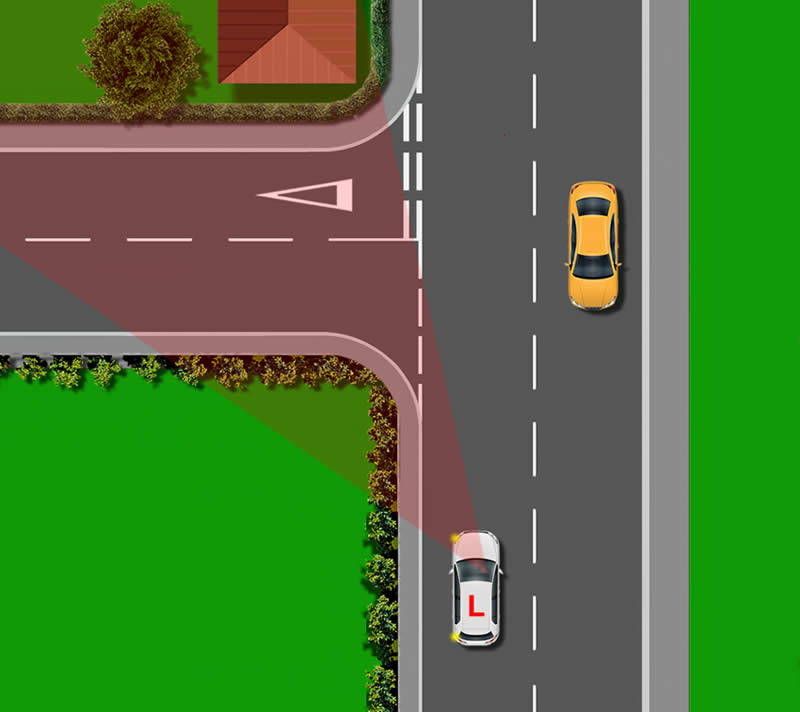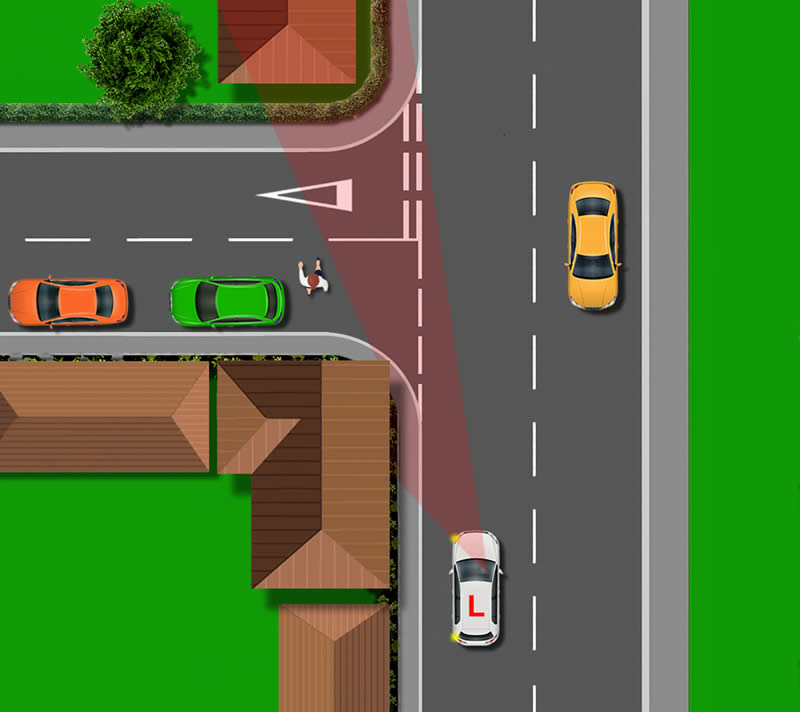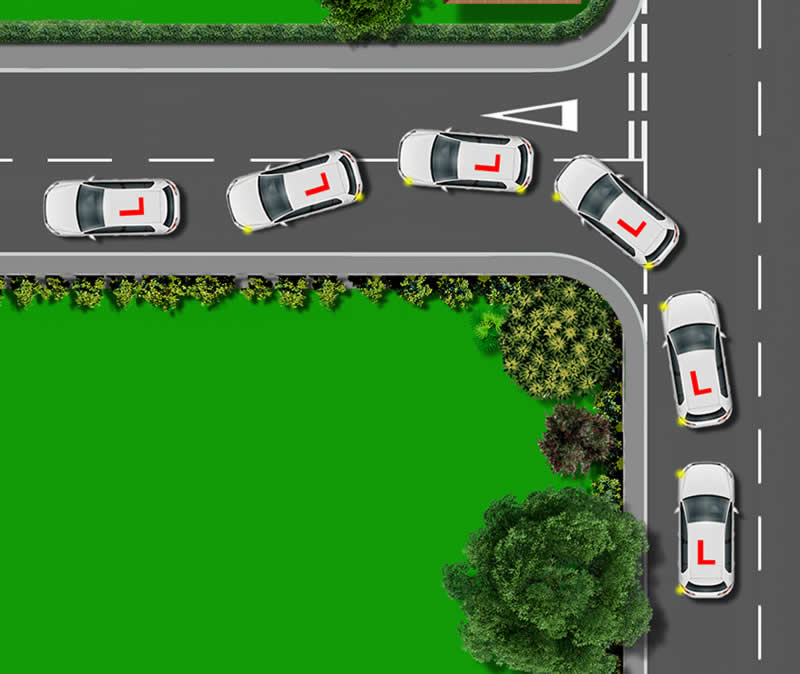The speed in which you make a left turn depends on what you can or cannot see just prior to making the turn. If the left turn is ‘closed’, meaning your view of the road is obscured, you’ll need to take the left turn slowly, at around 3 to 5 mph.
If the left turn is ‘open’, meaning you have a clear view of the road, you can take it a little faster at 5 to 10 mph, possibly slightly faster if the roads are wide and the weather conditions are dry.
Open or Closed Left Turns
Left turns are junctions where you’ll be turning left off of a major road, into a minor road. The road that you’re turning into might be what driving instructors refer to as ‘open’. Let’s look at an example of an open left turn.

The red shaded area represents the view that the driver has of the left turn just prior to making it. This open junction means that the driver can see that it’s clear from hazards. Let’s now look at an example of a closed left turn.

With this closed junction, the driver’s view of the left turn is obscured by buildings. This means the driver has no way of knowing what hazards may be around the corner. As we can see by the limited view represented by the red shaded area, the driver cannot see the parked cars or the person crossing the road. As such, the driver must make the left turn at a much slower speed in preparation for potentially stopping.
All turns are different and require slightly different speeds. To determine a safe speed for the turn, on the approach, you’ll need to assess whether it’s open or closed. Essentially, if you can see very little into the left turn, take it slowly and be prepared for hazards.
What Else Affects the Speed of a Left Turn
Consider also the width of the road either that you’re on, or the road that you’re turning into. If you’re driving too fast when making the turn, there’s a high risk that you’ll end up on the opposite side of the road as you go around the corner.

Taking the left turn too fast, resulting in the driver ending up on the opposite side of the road will almost certainly fail the driving test. If you’re on a narrow road, or the left turn is narrow, keep your car very slow at around 3 mph, or a walking pace. The slower speed will allow for better control of the vehicle.
Weather Conditions
You always need to take weather conditions into account when driving. Wet roads will at least double your stopping distance and icy roads will increase your stopping distance by over 10 times. When taking a left turn, you’ll also need to consider that roads will be more slippery than in dry conditions. Driving too fast round a corner can result in loss of control.